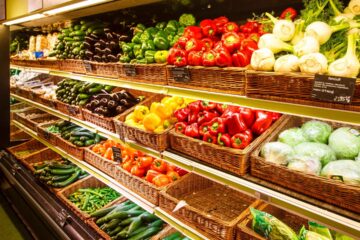Restaurant Safety With a Food Allergy 🧡
Welcome Back to Gluten Free – With Me! For this blog post we will be discussing allergy safety in a restaurant setting.
Dining out can be an exciting experience, but for those who follow a gluten-free diet due to celiac disease, gluten sensitivity, or personal preference, it can come with added concerns. Gluten, a protein found in wheat, barley, and rye, is hidden in several foods. For gluten-free individuals, it’s crucial to make sure that restaurants are not only offering gluten-free options, but are also taking steps to prevent cross-contamination.
-
Research the Restaurants
Before you even step food in a restaurant it is a good idea to do some research. Many restaurants have gluten-free menus or clearly labeled their dishes, but it is still important to verify if the establishment has experience in serving gluten-free customers.
🧡 Check online reviews
Look for feedback from other gluten-free diners. Websites like Yelp or other gluten-free blogs often offer insight into how well restaurants handle these dietary requests.
🧡 Call ahead
Ask about the restaurant’s experience in accommodating gluten-free diners. It is helpful to speak with a manager or chef directly to gauge how knowledgeable they are about these food practices.
-
Communicate Clearly with Your Server
Once at the restaurant, communication is key to ensuring a safe dining experience. Be sure to mention your dietary restriction as soon as you sit down or upon entering the restaurant.
🧡 State your need clearly
Let your server know you have a gluten allergy or sensitivity. Use specific terms such as the following: “I would like to see a gluten-free menu” “Do you make accommodations for gluten allergies”. Emphasize the seriousness of your requests.
🧡 Ask questions
Inquire about the preparation methods and asks whether the kitchen uses dedicated equipment, such as separate fryers, utensils, or cutting boards.
🧡 Ask about cross-contamination
Even if a dish is labeled as gluten-free, cross-contamination can still occur. Ask how the kitchen staff handles items such as sauces, dressings, or side dishes that could possibly be contaminated.
-
Understand Cross-Contamination Risks
Cross-contamination is one of the biggest concerns for those with gluten sensitivities. It occurs when gluten-free food comes into contact with gluten-containing ingredients. Often due to shared equipment, surfaces, or utensils. Here are a few high-risk areas so you can be on the lookout for them.
🧡 Shared cooking equipment
Grills, ovens, fryers that are used for both gluten and gluten-free foods can be a major source of cross-contamination.
🧡 Prep surfaces
Cutting boards, counters and knives that have been used for other foods can inadvertently transfer gluten into your dishes.
🧡Buffet-style setups
Self-serve areas, such as salad bars or buffets, are often risky for gluten-free diners. It is important to check your food and use separate utensils if eating in these.
-
Gluten-Free Does Not Always Mean Safe
Just because an item is labeled gluten-free does not always guarantee that it is safe to eat. Gluten can be hidden in sauces, seasonings, and even dressings. Always ask detailed questions about preparation and ingredients to ensure safety.
🧡 Check sauces and condiments
Many sauces, gravies, and condiments contain gluten as the thickening agents. Be sure to ask if they are made without gluten or if they have alternative options available.
🧡 Watch out for hidden sources of gluten
Food such as soups, processed meats and even salad dressings can contain gluten. Always double check ingredients and be specific about avoiding anything that might possibly contain gluten.
-
Trust Your Instincts and Advocate for Yourself
If a restaurant is not forthcoming with information about how they handle gluten-free dining or seems unsure about cross-contamination practices, it is okay to trust your instincts and to make a decision that is best for your health! It is always safer to walk away than to risk a reaction.
🧡 Do not feel embarrassed to ask questions
It is your health we are talking about, and any reputable restaurants should be willing to accommodate your dietary reactions to keep you safe.
🧡 Advocate for yourself
If you are uncomfortable with the answers you are getting or if you feel as if the restaurant is not taking necessary precautions, it is okay to politely refuse to eat there.
-
Know What to Do if You Experience a Reaction
Despite best efforts, sometimes cross-contamination can happen. If you suspect you’ve been exposed to gluten, knowing what to do next is important!
🧡 Remain Calm
If you start experiencing symptoms, try to avoid panicking.
🧡Seek medical advice if needed
If your reaction is server, do not hesitate to reach out for medical attention. People with celiac disease or gluten sensitivity may experience the following symptoms: nausea, stomach cramps, headaches, or fatigue.
-
Conclusion
Dining out with a food allergy requires vigilance and communication, but with the right precautions in place, you can still enjoy a delicious meal safely. By doing your research and communicating effectively you can reduce the chances of gluten exposure. After all, eating gluten-free is a lifestyle that requires special care, which restaurants should be willing to accommodate to.
Thank you for taking the time to read our blog about restaurant safety! We hope that you were able to find some useful information. If you would like to contact us, please fill out this form. If there are any suggestions you would like to share, you can do so here. Thank you for being a part of Gluten Free – With Me.


